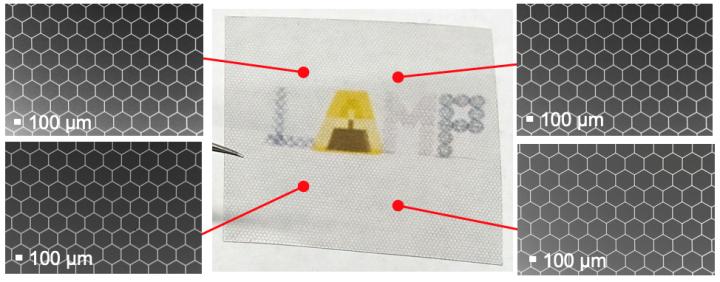$1m grant from DOE funds Pitt researcher and electroninks project using metal ink for OLEDs

Credit: Swanson School of Engineering
PITTSBURGH (Nov. 13, 2019) — Each year, consumers ask more of electronic displays, wanting them bigger, brighter, and even flexible. Displays from smartwatches to 4K TVs currently consist of organic light-emitting diodes (OLEDs) which use indium tin oxide (ITO) as a transparent electrode. However, ITO has its limitations: it is expensive; doesn’t perform well enough for larger areas; and can crack with repeated touching or swiping.
However, a $1 million award from the Department of Energy’s (DOE) Office of Energy Efficiency and Renewable Energy Small Business Innovation Research (SBIR) program will fund collaborative research to replace ITO with metal “microgrid” conductors to improve OLED performance. The research will be led by Paul Leu, PhD, associate professor of industrial engineering at the University of Pittsburgh’s Swanson School of Engineering, and Electroninks, a technology company in Austin, Texas.
Leu first came across the Electronink’s metal ink in its circuit drawing kit called Circuit Scribe. The device includes a pen that uses conductive silver ink to allow users to create working lights with circuits drawn on paper. Leu, whose lab works with transparent electrodes, saw the product and understood that the company’s particle-free, metal ink might be able to address some of the limitations with ITO.
“Electronink’s metal ink can cure at low temperatures, be printed into patterns, and has conductivity comparable to bulk metal,” says Leu. “By using a new metal patterning technique that prints the metal grid directly on glass or plastic, we can create ‘microgrid’ conductors that can outperform ITO at a lower manufacturing cost.”
“We are excited to continue this collaboration with Prof. Leu, and appreciate the DOE recognizing the milestones to date and continued support of our collective effort,” says Melbs LeMieux, President and Cofounder at Electroninks. “Prof. Leu’s team has helped to greatly accelerate the metal microgrid process technology for OLED lighting from concept to demonstration, and now we are working with our industrial partners towards commercialization.”
Leu and Electroninks began the project in 2018, working for a year in a proof-of-concept phase to show that their metal inks could work as a replacement for ITO.
“The first phase of the project was successful,” says Ziyu Zhou, lead graduate student on the project. “We were able to achieve high performance, with transparency over 90 percent and sheet resistance under 1 ohm per square.”
###
The DOE grant funds Phase II, in which Leu’s lab and Electroninks will continue to investigate and develop the technology, process, and implementation to commercial products with its industrial partners. They will be developing and evaluating the technology for a variety of applications such as displays, lighting, touch sensors, and electromagnetic interference shielding.
Media Contact
Maggie Pavlick
[email protected]
412-383-0449
Original Source
https:/




